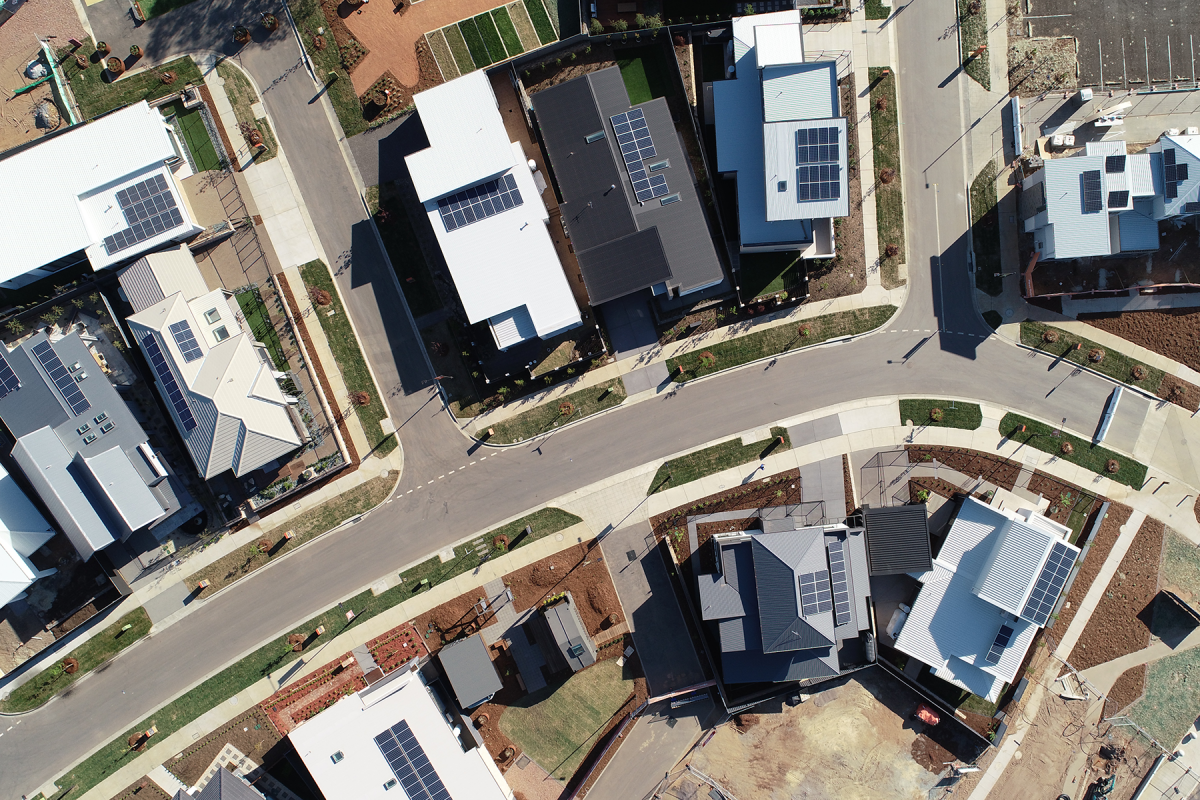
Solar panels galore in Ginninderry, Canberra’s ”greenest” community. Photo: Ginninderry.
Seven stars, you say? Let’s see.
Your outlook on the world is slightly darker, but the day will still be filled with comfort, based on a previous decision. Over the coming years, your financial situation will also improve.
OK, enough with the astrology. But this is what you can expect come October 2023, when all new homes built in the ACT will be required to achieve at least seven stars when it comes to energy efficiency. This follows an update to the National Construction Code in October this year.
But the question is: What do the stars really tell us?
Michael Ambrose is a senior experimental scientist in CSIRO’s Energy Business Unit. His team looks after the science behind the Nationwide House Energy Rating Scheme, or NatHERS.
“It doesn’t surprise me people are baffled,” he says.
“There are star ratings galore out there for so many different things, including hotels, kitchen appliances, car safety and on it goes. And there are certainly problems with how we can cut through all this and educate the buying public on what the seven-star energy rating on their new home actually means.”

Looks like a normal home inside, but the devil is in the detail when it comes to achieving high star ratings. Photo: Ginninderry.
So here’s Michael’s crash course.
“Within the National Construction Code, there is a requirement to meet the minimum energy rating,” he says.
Every new home in Australia is rated out of 10 using the NatHERS software, aimed at reducing the amount of heating and cooling to keep it comfortable.
Zero stars means the building shell does practically nothing to reduce the discomfort of hot or cold weather. Six is the minimum requirement in most states and territories at present and indicates good, but not outstanding, thermal performance. A 10-star home may not need any artificial cooling or heating at all to keep occupants high and dry.
“When we run the modelling software on a home design, it spits out a number based on the megajoules of energy per square metre used in a year to keep the house at a certain temperature,” Michael says.
The temperatures and numbers differ on the climate zone, but for Canberra, a six-star rating calls for a maximum of 165 megajoules per square metre, while seven stars drop it to 120.
Up to now, this has called for smaller windows, double glazing, more insulation and more shading, but with the arrival of seven stars, Michael says the biggest change will be to home orientation. This is how a house is situated on a block.
“In the past, we’ve tended to see builders achieve the energy rating on a standalone design they can just drop on any site, on any orientation, and still be confident it will pass. This will be more difficult under seven stars,” he says.
“They’ll now have to come up with different designs for north-south blocks, east-west blocks and so on.”
The new-look NatHERS will now also rate the energy performance of the whole home out of 100, covering major appliances, solar panels and batteries, in addition to the star rating for the building shell.
As the name implies, NatHERS is nationally imposed, but details are left in the hands of the state and territory governments, so there can be minor variations. For example, the same requirements sit under the Building Sustainability Index (BASIX) umbrella in NSW. The ACT is also the only jurisdiction to mandate the rating of existing homes at the time of sale or lease, with our ACT House Energy Rating Scheme.
“This has led to better-quality homes and a much better understanding of the star-rating system because more people have been exposed to it,” Michael says.
Then there are other rating systems, such as Green Star, administered by the Green Building Council of Australia. These might be more holistic than NatHERS “and builders might do that in addition, but they can’t do it instead of NatHERS”.

Ginninderry’s Flexi-living Homes offer high energy efficiency at an affordable purchase price. Photo: Ginninderry.
The up-and-coming Ginninderry development, on the ACT’s north-west border, provides an example of what it looks like when builders pull out all the stops on energy efficiency.
Ginninderry was awarded the Six-Star Green Star Communities rated by the Green Building Council of Australia in 2016 and then again in 2021. All homes in the new suburb of Macnamara will be required to have a minimum seven-star NatHERS rating, with all properties in the GX Display Village already showcasing what a seven-star design looks and feels like.
Sustainability manager Jessica Stewart says this emphasis is one of the top-selling points for Ginninderry, alongside location and price.
“The average star rating of all homes constructed in Strathnairn is already 6.5 stars and over 20 per cent of all homes are already seven stars or higher,” she says. ”Perhaps the benefits are already being understood by our purchasers.”
Jessica says that in Canberra, a seven-star home is predicted to use about 27 per cent less energy to heat and cool than a six-star home, depending on the quality and size of the build.
“So over the lifetime of your home, a higher star rating will mean less heating and cooling bills.”
There’s the long and the short of it: a bigger star number equals a smaller dollar number.





















